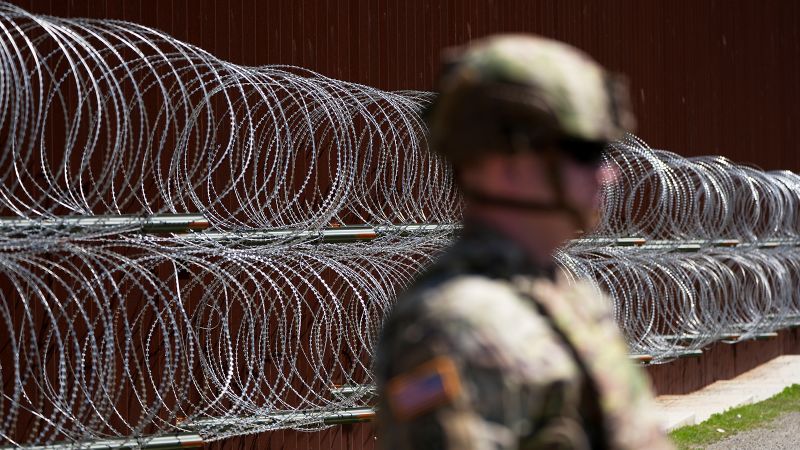The Trump administration has turned its attention to the contentious issue of labeling suspected cartel and gang members within the United States as “enemy combatants.” This controversial designation could provide the government a legal basis to detain these individuals with greater ease while limiting their ability to challenge their imprisonment. In a recent revelation from multiple sources privy to internal discussions, it was indicated that this designation could extend outside the U.S. borders, targeting suspected narco-terrorists abroad for potential lethal strikes.
The concept of “enemy combatant” has historical precedence, notably following the tragic events of September 11, 2001, when the U.S. government applied this label to individuals associated with groups such as the Taliban and al-Qaeda. This broad interpretation allowed for indefinite military detention of numerous detainees at the notorious Guantanamo Bay facility without the necessity of charges, trials, or any form of judicial review. The current discussions have rekindled a debate originally prompted during President Donald Trump’s first term in 2018, when he suggested that all undocumented migrants be categorized under the same terminology.
Concerns regarding the legal ramifications of such a designation have emerged from various quarters. Explaining the potential pitfalls, former Department of Homeland Security officials argued against treating migrants as terrorists, suggesting that such a move would veer dangerously into a “police state” mentality. This disquiet among legal experts echoes throughout current deliberations, as many emphasize that simply invoking the label without substantial legal backing would lead to severe consequences.
Currently, Trump is focusing on associating the term “enemy combatant” with specific foreign terrorist organizations previously identified by his administration, which include the likes of Tren de Aragua and MS-13. Some officials believe that the administration’s argument hinges on their perceived status as designated terrorists. Meanwhile, evidence of a coordinated attempt to link immigration to terrorism has surfaced, as illustrated by the claims made by Director of National Intelligence Tulsi Gabbard, who alleged that 600 individuals with terrorist ties unlawfully crossed U.S. borders under the present administration.
However, many migrants the Trump administration has accused of affiliations with MS-13 and Tren de Aragua have flatly denied such associations. Critical legal challenges have also been prompted due to the administration’s frustration with federal courts blocking deportations, particularly focusing on cases involving individuals who have allegedly not received appropriate due process.
Legal experts contend that reapplying the enemy combatant designation to migrants will encounter formidable legal hurdles. Experts argue that previous applications of the enemy combatant label were restricted to groups like the Taliban, with no basis for extending it to individuals labeled as gang members on U.S. soil. They assert that the complexities of legal definitions cannot be ignored, and there exists no straightforward legal justification for such a strategy.
Moreover, this proposed designation would not eliminate migrants’ rights to contest their detentions in U.S. federal courts, even if their situations became more complicated due to military custody. Even if the Trump administration pushes for this label, legal professionals maintain that individuals would still be entitled to due process amidst increasing complexities.
The possibility of sending those labeled as enemy combatants to external facilities, such as El Salvador’s mega prison CECOT – where numerous gang members have already been sent – raises additional legal uncertainties regarding their appeal rights against detention and removal. The Supreme Court previously ruled that enemy combatants at Guantanamo Bay had the right to appeal their detention, but it remains ambiguous whether such rights extend beyond U.S. territory.
Additionally, prominent cases, such as that of Kilmar Abrego Garcia, highlight ongoing frustrations within the administration. Garcia, whom the Trump administration alleged to be an MS-13 member, has undergone legal battles to prevent his wrongful deportation back to El Salvador. In attempting to label certain migrants as enemy combatants, there is a viewpoint that suggests this could potentially facilitate the U.S. military’s involvement in apprehensions—activities that civilian law enforcement traditionally handles, leading to worries among several Pentagon and legal experts about the implications for public safety laws.
As the discussions proceed, senior Pentagon lawyers express reservations over the administration’s apparent inclination to use military resources for law enforcement efforts. Similar concerns arose when drafting an executive order aimed at exploring military support for combating crime. In recent months, measures at the southern border have intensified, resulting in orders for military involvement in border security efforts.
While the Trump administration remains focused on framing the U.S. as being in conflict with transnational gangs, such as MS-13 and the cartels, Pentagon officials are wary of the implications. Recent moves to reevaluate authority regarding lethal force against drug cartels in Mexico indicate the administration’s ambitions, much like U.S. military operations targeting terrorists in hostile regions.
As the administration deliberates the legal frameworks surrounding designating individuals as enemy combatants, many observers caution that such strategies could face overwhelming legal challenges, potentially escalating governmental overreach and undermining civil liberties.



